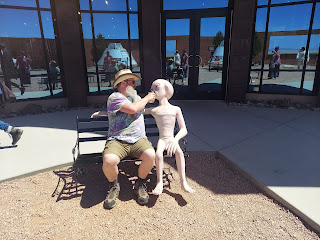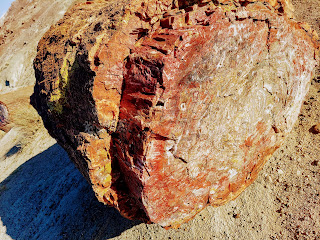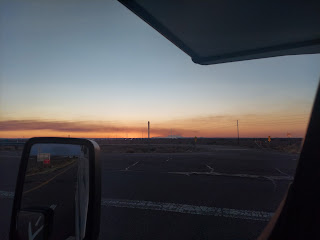4/11 - We took our time this morning getting going. No big rush with nothing really happening today other than traveling back to Las Vegas. Ben flies out tomorrow morning.
The drive down Route 66 was rural, brown and deserty. We did cross the Colorado River at the Hoover Dam, but they block the view of the dam from that bridge. Glad we took all the pics the other day when we were there.
We're staying the night at the Las Vegas RV Park, a 370-ish site RV park. It's huge, and freaking HOT. Glad we have electric so we can run the A/C.
Tomorrow I will drop Ben off in the morning at the airport and start the journey back home.













































































